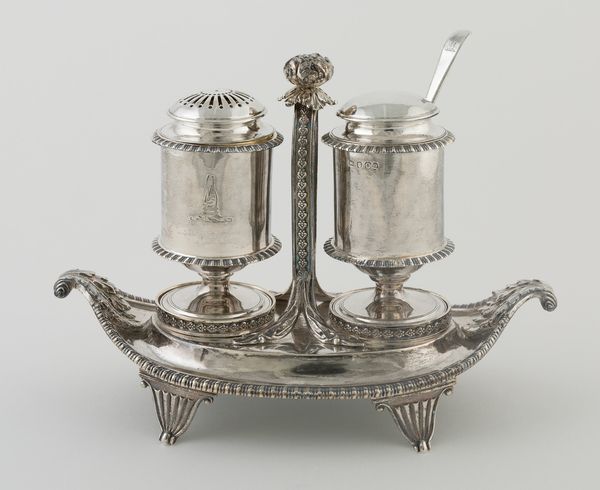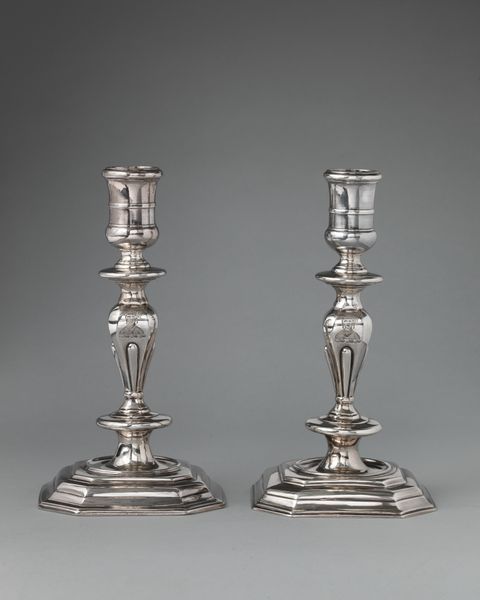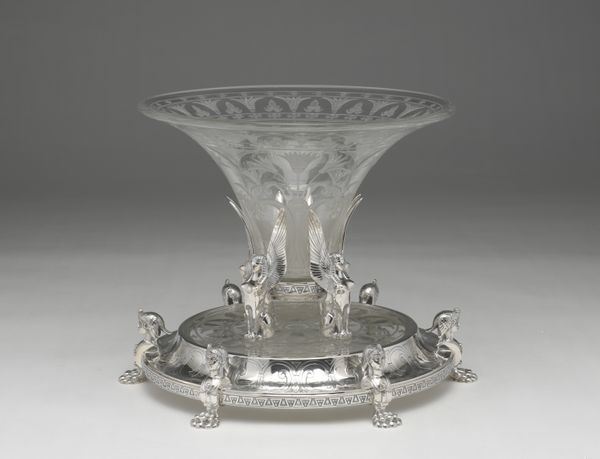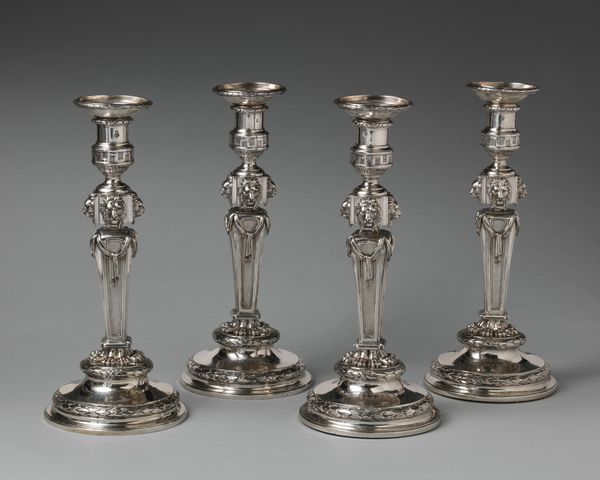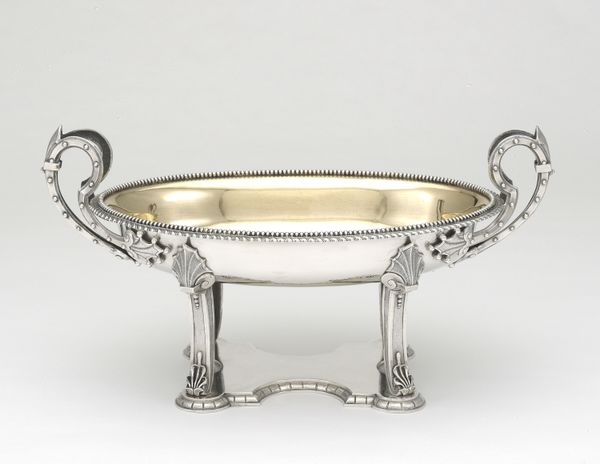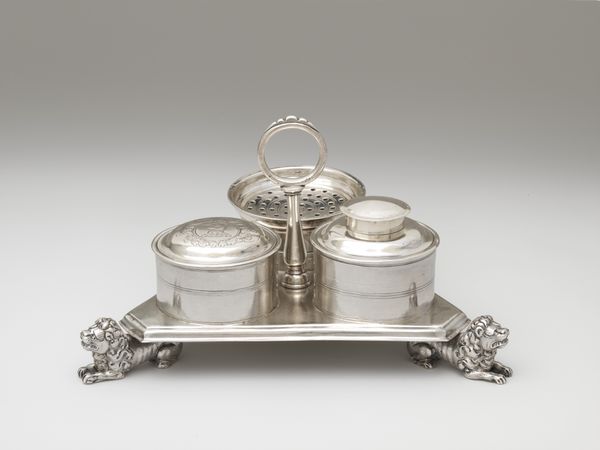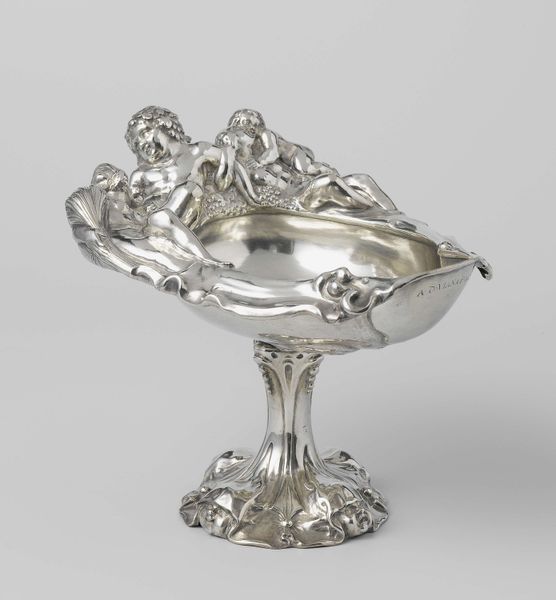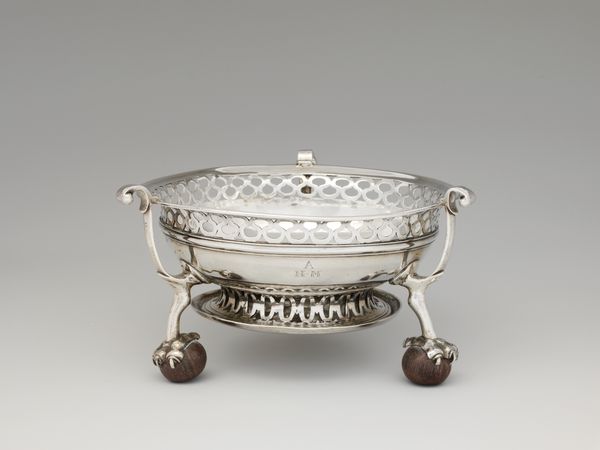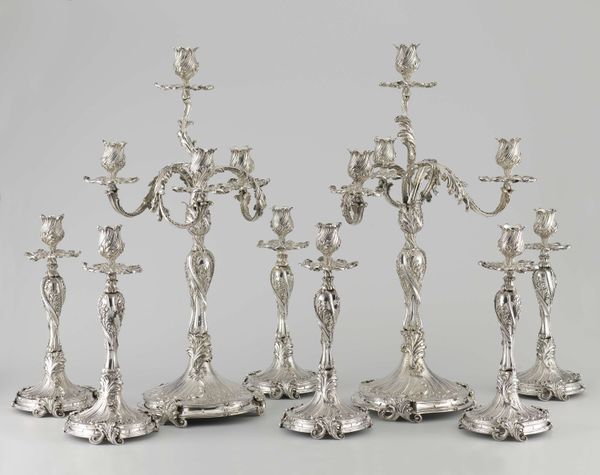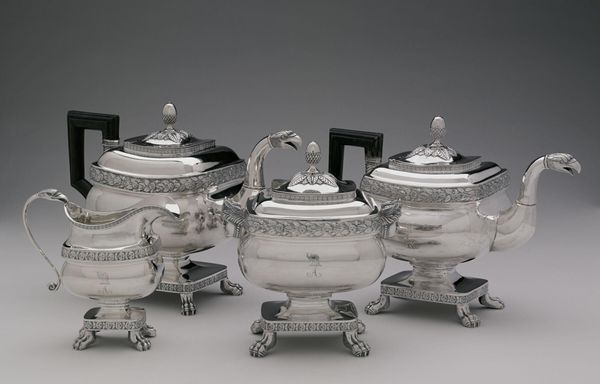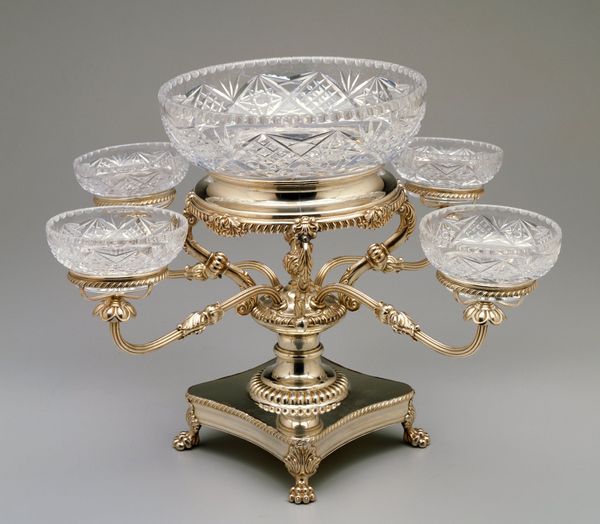
silver, metal, sculpture
#
neoclacissism
#
silver
#
metal
#
sculpture
#
decorative-art
Dimensions: Width: 13 3/16 in. (33.5 cm)
Copyright: Public Domain
Curator: Let's consider this neoclassical Inkstand, created around 1802 by the English silversmith John Plimmer. You can find it at the Metropolitan Museum of Art. What's your immediate impression? Editor: Sterile. Strikingly…cold. It gleams, yes, but it's a controlled gleam, contained. There's a calculated symmetry at play. It feels less about utility and more about projecting power. Curator: Power, yes. The symmetry evokes a kind of rational order favored in neoclassical art. Note the four silver vessels arranged precisely, each echoing the others. There’s a uniformity meant to communicate control. What symbols do you see emerging? Editor: Those faces at each corner of the base… almost mask-like. Are they trying to project status or authority? Are the means used, like silver metalwork, sending a message? The whole piece speaks to wealth, obviously, given the cost of the material and the labor involved in its creation. Curator: Precisely. Silver was not merely a material; it was a statement. And the neoclassical motifs – the restrained ornamentation, the clean lines – deliberately looked back to the perceived golden age of Greece and Rome. It signals a desire for order and civility. I would suggest a closer look at its design. Each leg depicts what appears to be an inverted acanthus leaf with floral ornaments. Editor: All that chased silver detail – think about the sheer hours that must have taken to create. I bet a master craftsman and many assistants toiled to shape and decorate it. The work put into crafting something functional but ultimately ornamental—where is all that labour today? Curator: It also prompts thoughts about the relationship between craft, labor, and luxury and who possessed this object, what messages would they try to convey by placing it within their spaces? It is no mere container; it is an object imbued with symbolism and social meaning. Editor: Thinking about its legacy, this inkstand serves as an icon—not merely a writing tool but a representation of social hierarchies. And its legacy extends through those who toiled over it—makers whose experiences have unfortunately faded. Curator: Indeed. An object like this holds so many stories. It prompts us to consider who held the pen and, crucially, who was denied that right. Editor: Material and symbol interlocked. That changes how you consider something you may have taken as beautiful.
Comments
No comments
Be the first to comment and join the conversation on the ultimate creative platform.
